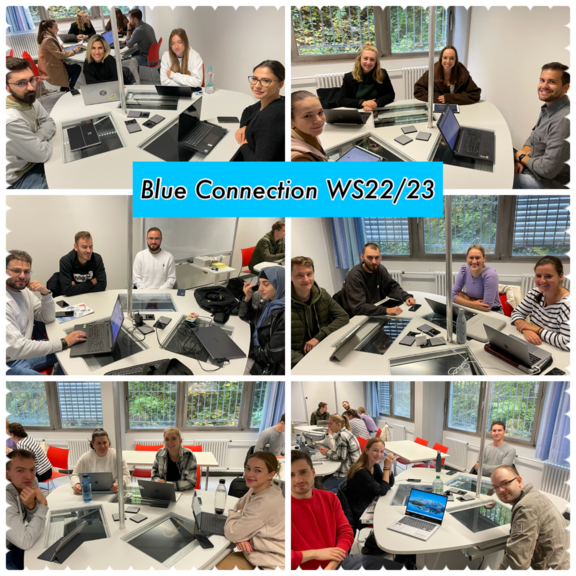What challenges does Supply Chain Management face at a time when the economy is struggling with massive resource bottlenecks, exploding commodity prices and sharply rising supply risks? Economists and environmental economists have long called for the transformation towards a circular, resource-efficient economic model. Students with a focus on "Supply Chain Innovations" get to the bottom of the topic and many other questions. Accompanying the focus lectures, they have been learning for 3 semesters with the business simulation game "The Blue Connection (TBC)".
The students run their own virtual company, the e-bike manufacturer "The Blue Connection". They represent a management team from the Procurement, Supply Chain, Finance and Sales departments. Due to the increased demand from customers for sustainable products, the e-bike manufacturer must transform its linear value chain into a circular value chain. In the simulation game, the participants learn what the transformation from a linear ("dismantling – producing – consuming – throwing away") into a circular supply chain can look like and which strategic and tactical decisions a company has to make for this. Various circular economy strategies, such as maintenance, repair, refurbishment, component remanufacturing and recycling, are used.
"Circular economy offers new opportunities to develop a more sustainable economic growth model and is gaining importance worldwide. In this course, students will learn how to lead and build a sustainable business where circular economy concepts are incorporated into the corporate strategy. The individual decisions have a much greater influence on the entire process than one might think. Everything in the supply chain is interlinked, like in a big clockwork," says Andrea Walbert, lecturer of the faculty and responsible for the seminar. "The simulation game "The Blue Connection" enables participants to set up a circular business model and forecast the monetary and sustainable effects in the future. A regular evaluation of results shows the teams the correlations and effects of their decisions for their own company and all processes involved."
The results of the teams confirm the success of the tool. This semester, all teams were once again able to improve the operating result of "their" company and at the same time establish a circular supply chain. And also very important: All student teams play against each other throughout the semester and in the end the team with the best circular economy strategy, the highest return on investment (ROI) and return-on-material (ROM) wins.

